Centrifugal Pumps
A centrifugal pump has a relatively straightforward design: a casing with a discharge valve houses an impeller with multiple blades which turns on a mechanically powered rotating shaft. As the shaft rotates, this pumping motion increases the pressure of the liquid passing through the casing via kinetic energy generated by the blades on the impeller. Once the fluid's pressure is increased, it passes through the pump through the discharge valve. Centrifugal force is combined with positive displacement to sustain the operation.
This basic design allows pumps to be installed in larger mechanical systems or engines, from automotive engines to water treatment plants. Because centrifugal pumps often work with a variety of different fluids, from water to acids to oil, the casings are usually made from fairly hardy materials such as stainless steel, cast iron, or aluminum. The pumps usually have a weep hole, which is an opening on the underside of the pump that is used to help spot the first signs of mechanical seal failure. The mechanical seal is used to create a barrier between the motor and the water so that unwanted fluid does not go into the engine or motor. When the weep hole leaks, the pump will probably need repair or replacement.
High pressure or an overabundance of oxygen, specifically pockets of air within the casing that can develop when the pump is not being used and the casing is empty, can disrupt the operation of centrifugal pumps. Many pumps need to be regularly primed or checked for air pockets to ensure a seamless operation. The formation of air pockets is frequently referred to as cavitation.
Quick links to Centrifugal Pumps Information
The History of Centrifugal Pumps
The earliest conceptual incarnation of the centrifugal pump originated during the Italian Renaissance thanks to an engineer known as Francesco di Giorgio Martini, who described a mud lifting machine in a treatise in 1475. The more modern and recognizable form of the pump, with its straight vanes, did not appear until Denis Papin designed it during the 17th century. However, it wasn’t until the 19th century that the next major advance in the field was made. In 1851, John Appold unveiled his design for a centrifugal pump with a curved vane, which won him a council medal at that year’s Great Exhibition at the Crystal Palace. The curved vane was three times as efficient as any of the preexisting straight vane pumps, and had a profound influence on the industry.
A Note on Positive Displacement Pumps
While all centrifugal pumps use positive displacement as part of their operating procedure, they are differentiated from positive displacement pumps by the fact that they also increase the speed of the liquid moving through the pump, while positive displacement pumps simply move the liquid at the same speed. Positive displacement pumps include a lobe, screw, peristaltic, and a gear pump configuration.
A gear pump creates positive displacement by way of multiple meshing gears. There are two main types of gear pumps, internal and external. An internal gear pump uses a combination of an internal and external gear spur, while an external pump uses two external gear spurs. The fluid processed by these pumps moves at a steady rate per each revolution. Gear pumps are most frequently used in hydraulic fluid power operations.
Design of Centrifugal Pumps
Most vehicles built in the United States during the 20th century use a centrifugal water pump to provide water to the engine. The impeller of the water pump can sometimes be modified to increase the flow rate of the pump and the subsequent performance of the engine.
In fact, most centrifugal pumps differentiate themselves by modifying either the impeller or the discharge apparatus. The curvature and depth of the impeller vanes or blades has a significant impact on the operation of the pump. The impeller itself can also either be left open or closed. In a closed situation, a plate or other enclosure is affixed to the impeller blades. This has been shown to increase the flow rate in some applications, depending upon the specific fluid that the pump is processing.
The size of the discharge apparatus, combined with the speed of the shaft, can also significantly impact flow rate. However, it is vital that any modification of a pump does not unduly increase the “head” or pressure within the system. This pressure is measured in pounds per inch, or PSI, and refers to the force exerted by the fluid within the pump.
Centrifugal Pumps Images, Diagrams and Visual Concepts
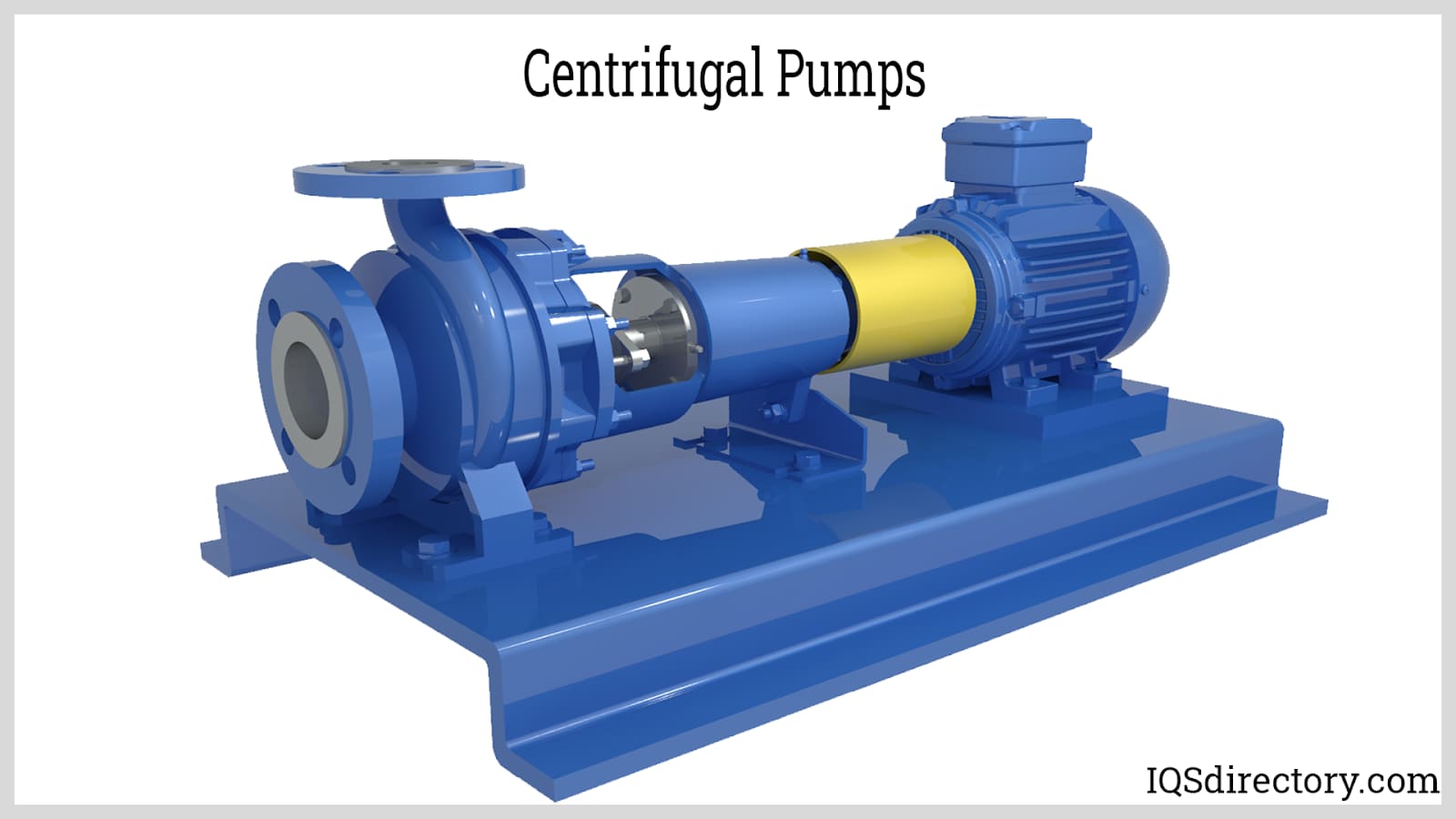 Centrifugal pump, a hydraulic machine that changes mechanical energy into hydraulic energy by using centrifugal force acting on the fluid.
Centrifugal pump, a hydraulic machine that changes mechanical energy into hydraulic energy by using centrifugal force acting on the fluid.
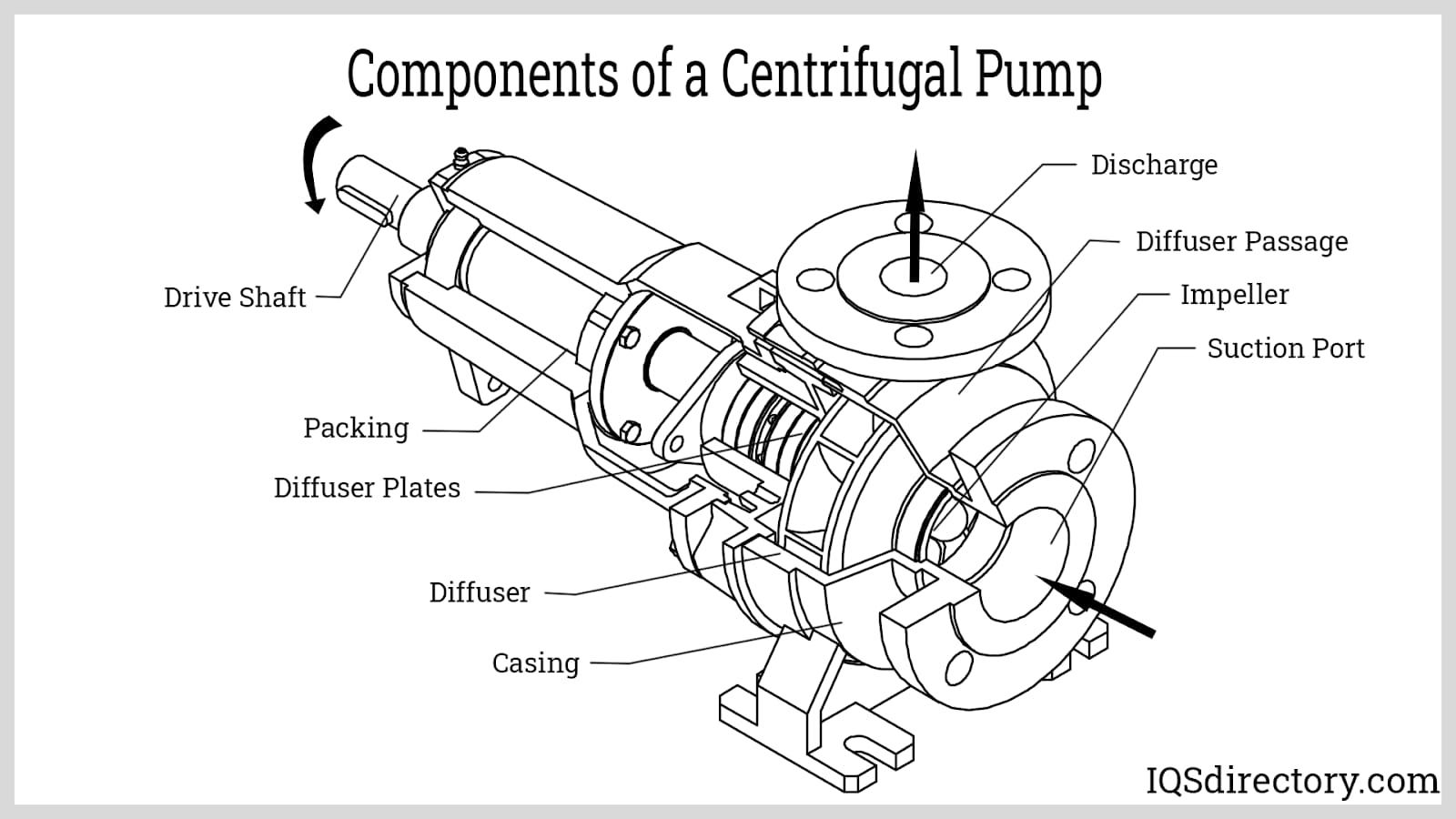 The main components of a centrifugal pump includes a shaft, impeller, casing, a suction pipe, and a delivery pipe.
The main components of a centrifugal pump includes a shaft, impeller, casing, a suction pipe, and a delivery pipe.
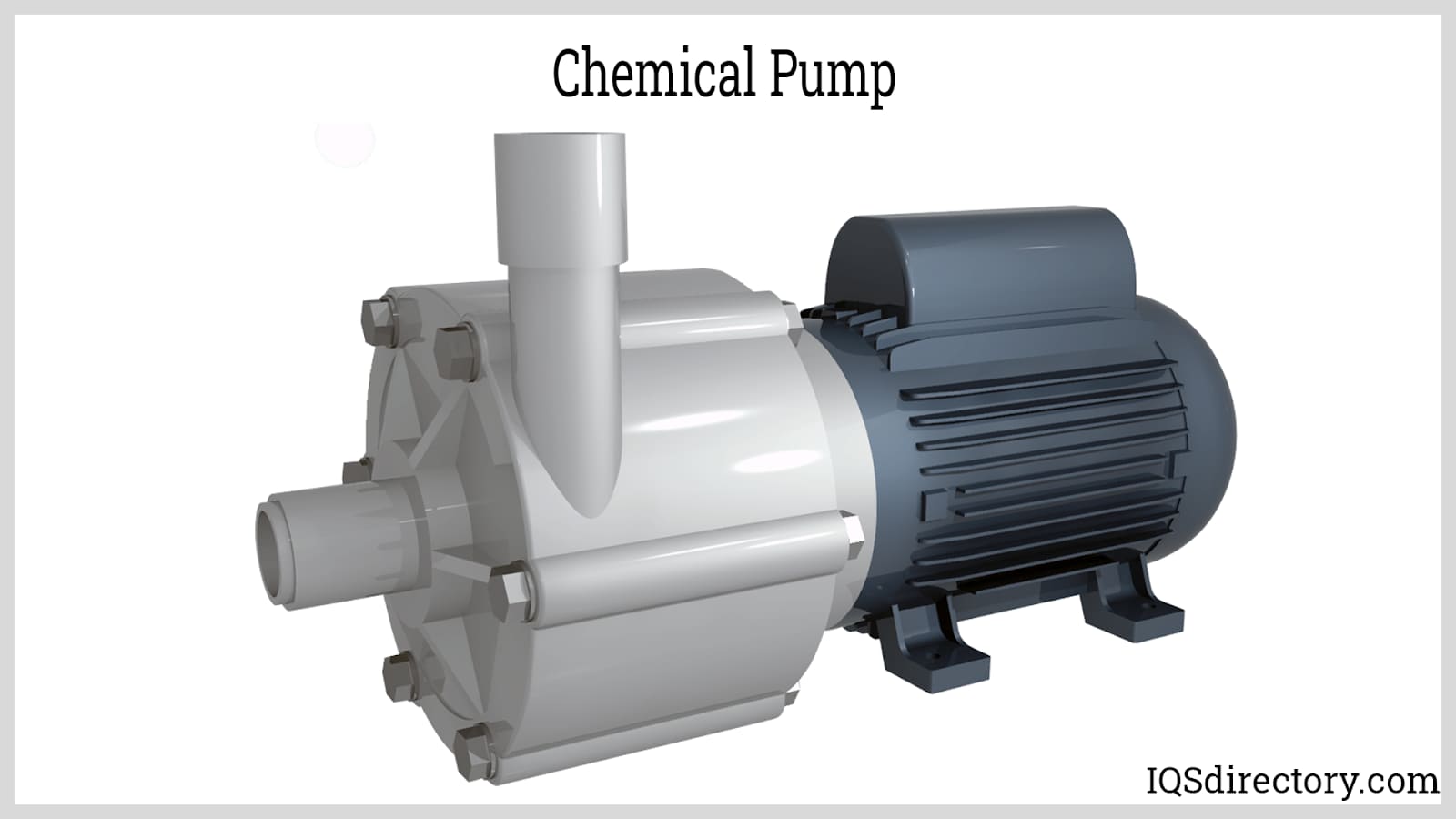 Chemical pumps are use in pumping chemicals that are resistant to corrosive materials.
Chemical pumps are use in pumping chemicals that are resistant to corrosive materials.
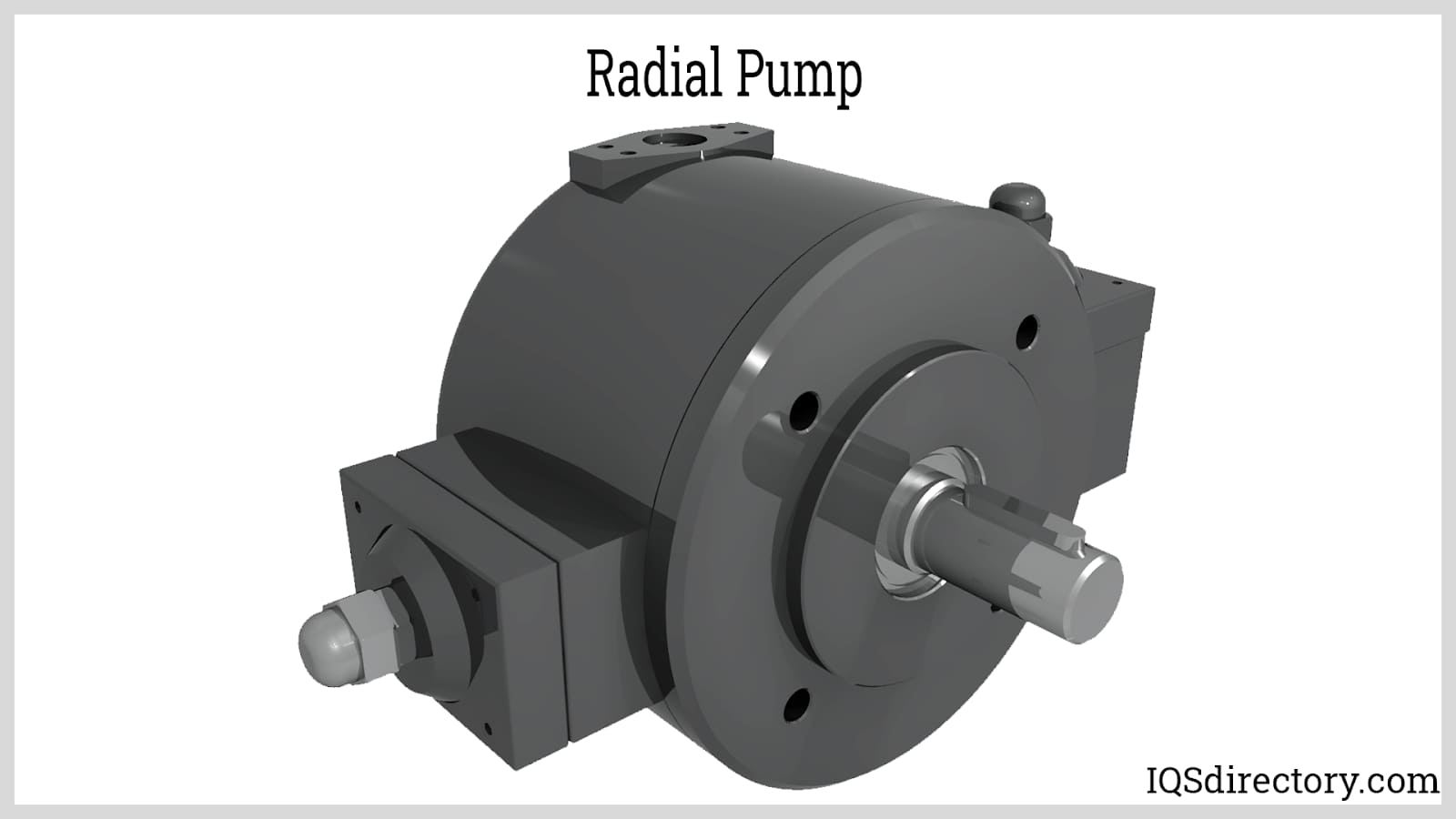 Radial centrifugal pumps, the fluid comes out of the impeller after rotating for 90 degrees relative to the suction.
Radial centrifugal pumps, the fluid comes out of the impeller after rotating for 90 degrees relative to the suction.
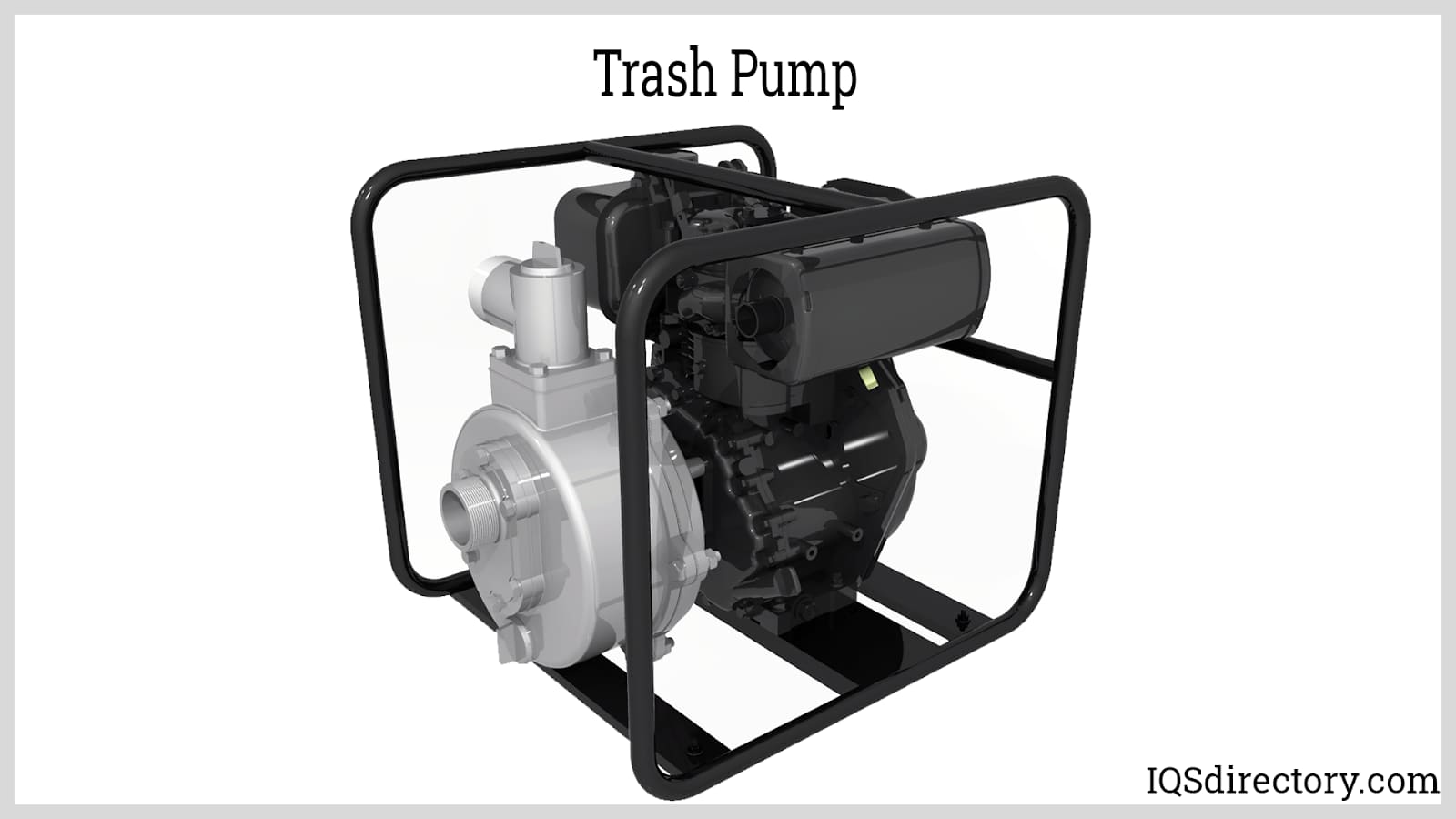 Portable pumps that pumps large amounts of water which contians soft and hard solid material.
Portable pumps that pumps large amounts of water which contians soft and hard solid material.
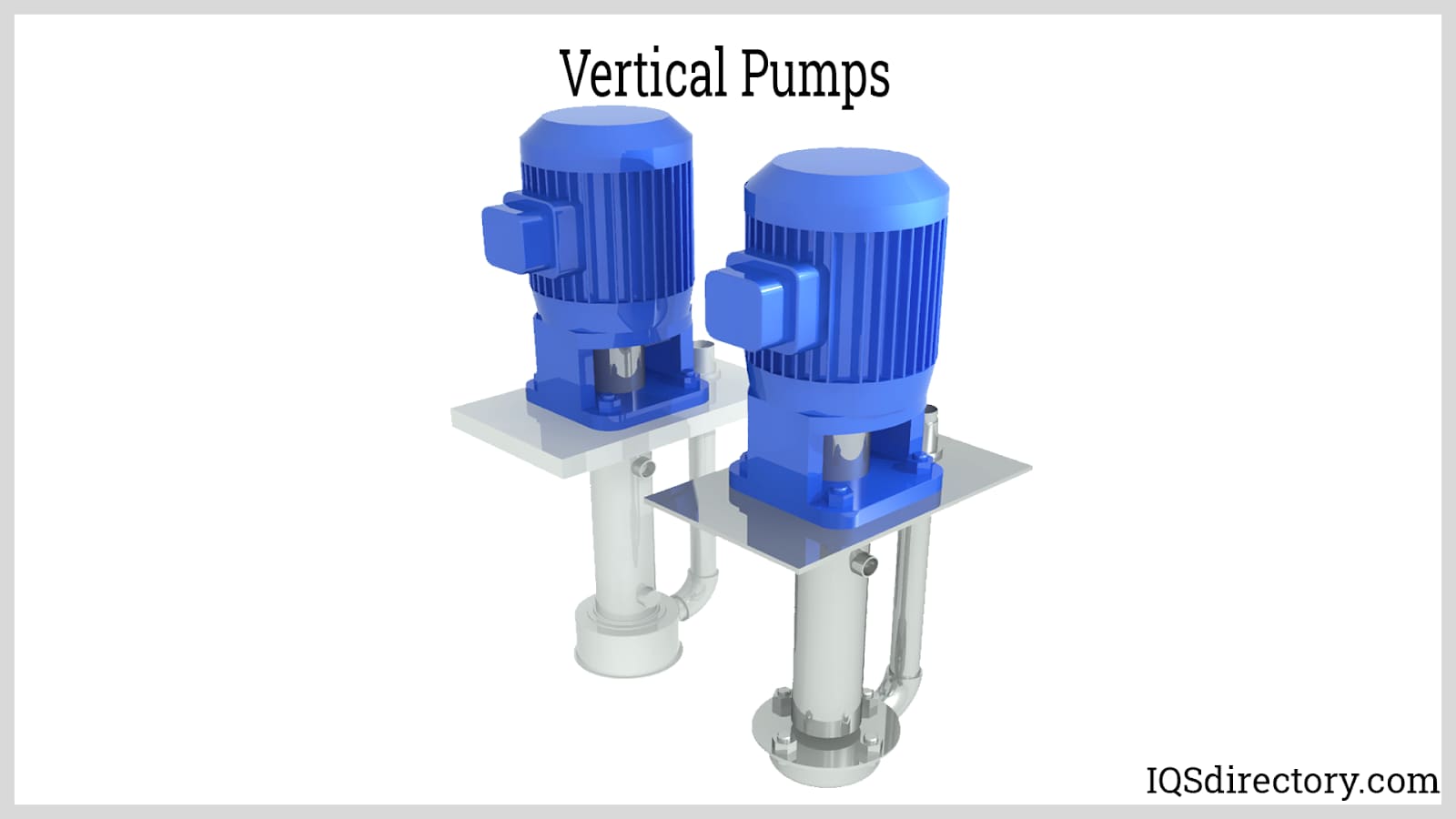 Vertical pumps are used whenever the level of water pumping is below the volute centrifugal pump limits.
Vertical pumps are used whenever the level of water pumping is below the volute centrifugal pump limits.
Types of Centrifugal Pumps and Applications
- Axial Flow Pumps
- Have a vertical shaft attached to a perpendicular impeller. The lifting action of the impeller vanes pushes the liquid within the pump upwards in an axial flow pump. A jet pump aids the operation of a centrifugal pump by increasing suction, while a submersible pump is installed underground. True to its name, a submersible pump is almost constantly inundated with liquid, and therefore is a self-priming pump: air pockets rarely form within the suction line because water or another liquid is always being circulated through the pump.
- Submersible Pumps
- While most pumps are powered mechanically, some pumps are powered by a hydraulic motor. Submersible pumps can be powered electrically. The power cords to these pumps are encased in a durable, waterproof cover, usually layered with thick rubber. Because they are more difficult to maintain, electric pumps tend to be smaller, such as a 12 volt pump, and deployed for specific operations, such as pumping out a flooded structure. The pump can be placed on a floating rig with an outbound discharge hose and allowed to gradually pump out the unneeded water. These pumps are sometimes also referred to as sump pumps.
- Chemical Pumps
- Designed to work with abrasive fluids, including bleach, resin, acid, and an array of other toxic, often corrosive, materials. These can be useful in industrial operations. Well pumps, meanwhile, pump water from an underground region to a higher location within a given structure. Well pumps are often used to provide water for apartment buildings or other large structures, and often work in concert with a pressure tank.
- Trash Pumps
- Although they are primarily designed to deal with liquid, the centrifugal pumps can occasionally handle liquids that are contaminated with other materials, such as twigs, small rocks or sand, or other debris. These types of pumps are known as trash pumps, and are generally used in wastewater treatment plants or sewage operations. A trash pump is typically able to pump thousands of gallons of water per minute, a measurement that is referred to as the flow rate, and manages the thicker, more viscous liquid by way of a very large discharge opening and much deeper impeller vanes than are found on a typical centrifugal pump. There are several different subsets of trash pumps, including semi-trash pumps, and other pumps that handle liquids with specific particulate size limits. A dewatering pump, for example, can process non-hazardous water with particulate matter up to 0.25” in diameter. Some dewatering pumps are completely submersible and can operate from any position, including upside down.
- Close-Coupled Pumps
- Directly connected to a power unit but do not have any less gearing or shafting.
- Double Suction Pumps
- A type of radial flow pump in which the fluid enters the impeller from both sides. Due to the extending of the shaft into the suction passage, double suction pumps are limited to pumping clear liquids.
- Mixed Flow Pumps
- Designed with wide unblocked passageways and are an intermediate pump between radial and axial flow pumps. Mixed flow pumps develop the pressure partially with centrifugal force and partially with the lift of the impeller vanes on the liquid.
- Multistage Pumps
- Can be either horizontal or vertical, consist of two or more pumps of similar capacity that discharge into each other in a series. Progressively the pumps develop a total head, the sum of the heads that each pump has developed. A common shaft with several impellers, each with its own volute, is rotated by a power supply, building up pressure in stages.
- Radial Flow Pumps
- Take in liquid through the center of the impeller and move it out along the impeller blades at a 90-degree angle to the pump shaft. Radial flow pumps develop the pressure only with centrifugal force.
- Single-End Suction Pumps
- A type of radial flow pump in which the fluid enters the impeller from one side, and the shaft does not reach into the suction passage. Single-end suction pumps are used in applications where there are large solids, such as rags and trash, that would normally clog the pump.
- Two-Speed Centrifugal Pumps
- Turn the shaft and impeller at two different rpm levels with a two-speed motor, allowing for optional pump capacity.
- Vertical Cantilever Pumps
- Designed to have only the casing and the impeller submerged in the pumpage for priming and the support bearings for the rotating element in a dry environment.
- Vertical Cantilever Pumps
- Have no throttle or bumper bushings or any rings at the impeller or submerged below the maximum normal water level, and they are used in applications, such as a sump or tank, in which it is necessary not to have a bearing in the pumpage.
- Vertical Pumps
- Use centrifugal force to convert mechanical energy into kinetic energy and increase the pressure of a liquid as it travels upwards through a pipe.
- Vortex Pumps
- Inefficiently designed pumps in which the impeller is recessed into the volute. However, vortex pumps are practical in applications that require pumping of excessive solids.
Maintenance of a Centrifugal Pump
While a certain threshold of increased pressure is needed to make the pump operate successfully, too much head can unbalance the pump, causing damage. Depending on the amount of pressure, a pump can occasionally tear free from its moorings, known as shock mounts, and wreak havoc on an engine or surrounding assemblies. In order to avoid this unfortunate circumstance, pump owners should regularly prime their pumps to avoid cavitation, and make sure that they are not attempting to force too much liquid through their system too quickly. Operating a pump with a motor that is moving too quickly can also result in a build-up of unwanted head, thereby damaging the pump.
Frequent cavitation also damages the components within the pump. This happens because the impeller blades become pitted when the air pockets explode under pressure. Priming the pump at regular intervals will prevent undue cavitation, although over the working lifetime of a pump some amount of cavitation is likely to occur.
Things to Consider Regarding Manufacturers
- Purpose and Size of Pumps
- Because of their wide range of applications, centrifugal pumps are manufactured by a number of different companies for different purposes. Generally speaking, the pumps will increase in size and power for heavier industrial applications, while smaller pumps are used for less intensive operations. The industrial centrifugal pump manufacturing market has created pumps with 40,000 gallon per minute flow rates. This flow rate would not be necessary in a smaller application, such as in a car or in a well pump in a single family home.
- Manufacturers are also experimenting with the use of thermoplastics and fluorocarbons as opposed to metal for use in the seals of pumps. These types of materials tend to resist corrosion better than metal, and therefore can increase the longevity of the pump without compromising the production of kinetic energy or centrifugal force. However, the use of stainless steel, cast iron, and aluminum is still typical for the exterior casings, although plastic is occasionally suitable as a material.
- The need for jet pumps has also decreased in recent years as manufacturers have become more adept at designing pumps that provide ample suction without the need for additional assistance. However, depending on the viscosity of the fluid and any corresponding debris, a jet pump may still be needed.
- Pump Application
- In any case, a client who is attempting to find the best manufacturer for their needs should first be able to specifically articulate the application for which they will be using the pump. A client who is attempting to install a series of drainage pumps across a wide variety of low-lying properties will have different needs than a client who wishes to operate an aftermarket parts company that will sell modified water pumps for higher automotive engine performance. Similarly, it is vital that the client understands the kind of fluid they will be dealing with and its relative purity. In the case of the client who is seeking a manufacturer for drainage pumps, the water that the pumps will encounter will likely have some form of debris or small particulate matter contained within it. The aftermarket parts company, on the other hand, will likely be dealing with relatively clean water that has little to no debris. In each case, the condition of the liquid will influence what kind of pump is appropriate for the task.
- Batch Size of Pumps
- Many manufacturers prefer to produce “mill runs” or large batches of a given product. This is partially because a large production batch will decrease overhead costs while also guaranteeing a substantial sum for the company. Clients who are attempting to design a new version of a pump or improve upon the basic centrifugal pump design should first make prototypes of the design. These prototypes will enable the client to instigate a thorough round of testing, which will reveal any flaws or unexpected performance quirks of the pump before it is approved for mass production. Manufacturers are often able to recommend a machinist or other fabricator for this task if they do not have a department already dedicated specifically to prototype production.
Centrifugal Pumps Terms
- Air Bound
- A circumstance in which a centrifugal body is so full of air that a vacuum can no longer be formed. Without vacuum, water cannot flow into the pump.
- Atmospheric Pressure
- The force applied by the atmosphere to the surface of the earth. Atmospheric pressure, the standard of which is 14.7 lbs per square inch, affects the operation of a pump.
- Capacity
- A term describing how much water a pump can process. Capacity is typically articulated as gallons per hour (gph) or gallons per minute (gpm).
- Cavitation
- An undesirable condition in which vacuum pockets form within the pump. The air pockets eventually implode under pressure, resulting in the pitting of the impeller and volute surfaces.
- Centrifugal Force
- The force that causes a substance to move away from its center of rotation.
- Check Valve
- An apparatus in a discharge or suction line that permits flow in only one direction so as to prevent reverse flow and isolate the material being pumped.
- Dewatering
- The removal of unwanted dirty or clear water containing no hazardous materials.
- Diffuser
- A stationary casing, like a volute, that houses the moving impeller. Diffusers are compact in design, enabling the pump to create higher pressure heads.
- Discharge Hose
- A collapsible hose that moves the discharged water from the pump.
- Discharge Port
- Also called the “outlet,” it is the point at which the discharge pipe or hose is connected to the pump.
- Drain Plugs
- Detachable plugs for draining water from the pump when it is inactive.
- Dynamic
- Acting by motion, not weight, in contrast to static.
- Dynamic Head
- The head or pressure force against which the pump operates.
- Dynamic Suction Head
- Also known as “total suction head,” it is the combination of the static suction lift and the suction friction loss in the suction line.
- Effluent
- Partially or completely treated wastewater or other liquid that flows out of a septic tank or treatment unit.
- Flapper Valve
- Rubber molded around a steel weight that seals off the inlet or outlet, preventing water from either entering or exiting the pump at the wrong time.
- Flow Rate
- The required amount of gallons per minute (gpm) of pump flow. Flow can also be expressed in gallons per hour (gph) and in million gallons per day (mdg).
- Head
- The measure of the pressure or force exerted by a fluid in a hydraulic system. Also, the height of fluid above any point, taking into account losses or gains in pressure due to gravity and friction as water travels through a system, measured in lbs per square inch (psi) or feet of water.
- Impeller
- A rotating disk with vanes of varying amounts attached to the “r” drive shaft that creates centrifugal force within the pump casing of a centrifugal pump. Impellers can be open or closed.
- Impeller Eye
- The center of the impeller and the point at which fluid flows into the impeller.
- Impeller Vanes
- Pump components located on the impeller between the eye and the discharge side of the impeller. Impeller vanes direct the flow of the liquid to the outside diameter of the impeller.
- Intake
- The flow, or the rate of flow, into a pump.
- Mechanical Seal
- A device that forms a seal between the pump and the engine or motor and prevents water from getting into the engine or motor.
- Net Positive Suction Head Available (NPSHA)
- A measure of the absolute pressure of the liquid at the inlet of the pump.
- Prime
- Allowing the pump to disperse all air from the influent line of a circulating system by causing fluid to start flowing once again. Priming the pump is usually accomplished by either manually filing the volute or turning the pump on.
- Pump Housing
- The body or casing of a pump, which may be made of plastic, cast-iron, stainless steel or aluminum.
- Shock Mounts
- Rubber vibration-dampening devices that are mounted on the engine to prevent the pump from “walking away.”
- Static
- Acting by weight not motion, in contrast to dynamic.
- Strainer Basket
- A plastic mesh basket that traps debris to prevent its reaching the impeller. Strainer baskets are located in the strainer pot.
- Strainer Pot
- The housing of the strainer basket that is located on the influent side of the pump. Strainer pots serve as a priming chamber.
- Suction Hose
- A reinforced hose through which water flows into the suction end of a pump.
- Vane Passing Syndrome
- A type of cavitation resulting from the small size of the impeller or low cutwater clearance.
- Vent
- The act of removing air or gas from a system. Stuffing boxes in vertical pumps must be vented to prevent the seal faces from running dry.
- Viscosity
- The resistance to flow of a liquid at a particular temperature. High viscosity liquids, such as motor oil, are thick and tend to flow slower than water, a low viscosity liquid.
- Volute
- Stationary casing of a centrifugal pump that separates air and water and in which the impeller rotates. Volutes are spiral-shaped in order to facilitate the partial conversion of the velocity (kinetic) energy into pressure head as the water leaves the impeller.
- Vortexing Liquid
- Creates a “whirlpool effect” that can cause air to be drawn into the suction of the pump.
- Weep Hole
- A small opening located on the underside of the pump at which point the engine joins the pump. Weep holes provide the means to quick detection of a leak before water seeps into the oil sump of the engine.